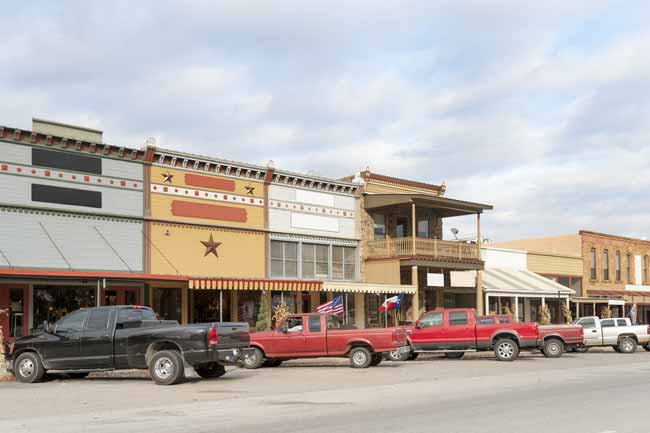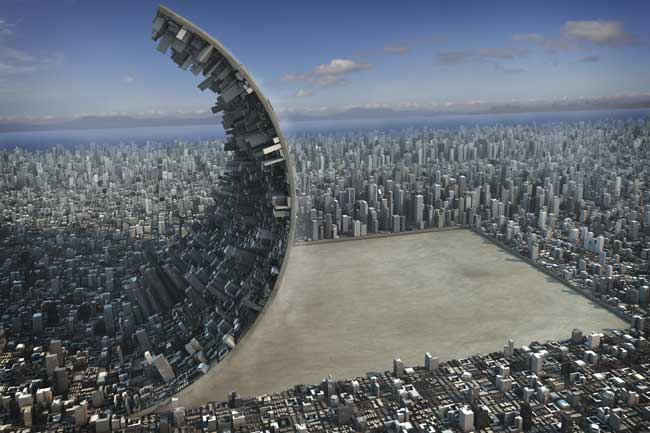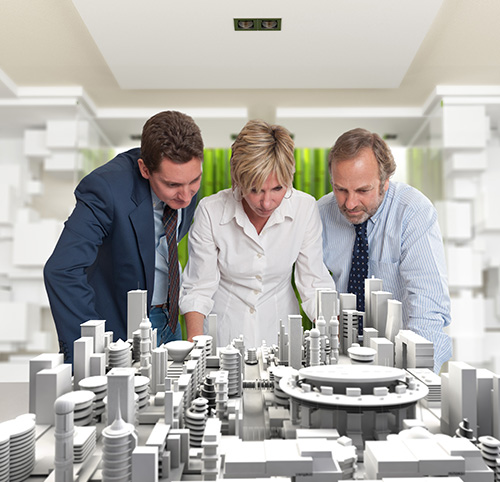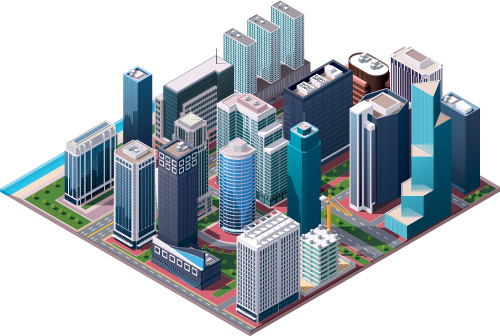Category: Economic Development
Key Concepts For Economic Development In Small Cities and Towns
Posted by Retail Attractions Blog on June 1, 2019 in Blog | No Comments
Across the United States, many small and mid-size communities are struggling to find an economic development strategy that really works. Thankfully, you don’t have to muddle through this without guidance.
There are three key concepts to keep in mind when developing a smart strategy for economic growth. You’ll want to focus on supporting businesses, supporting workers, and supporting quality of life. Plus, you’ll also want to find ways to support your development strategy and get professional help with moving forward.

Support Businesses
It’s pretty obvious that supporting existing businesses and attracting new businesses has a positive impact on a city’s economic development. Doing this helps create jobs, expands and diversifies your tax base, and improves quality of life by offering a variety of services and amenities.
If you’re a small town on a highway (for example), adding a QuikTwip will bring in a lot of traffic/business. That could lead to fast food chains like a Taco Bell or Chicken Express opening locations nearby, driving up sales even more. Not only does retail growth of this kind serve residents, but it also brings in business from outside the community as well.
Support Workers
It’s easy to overlook the human side of economic development, but that would be a big mistake. Studies show that the education level of the population in your city is the single most important factor that shapes economic success. That means your city needs to attract and keep talented, skilled people.
You’ll also want to ensure that all residents can successfully compete for jobs. A balanced economic development strategy will include a focus on workforce development efforts. These efforts will help ensure that the skills and education of the local workforce line-up with the needs of existing and growing industries.
Support Quality of Life
Cultivating a good quality of life in your community supports both residents and businesses. The term “quality of life” is hard-to-define, but it undeniably sets communities apart from one another. It’s one of those things that people know it when they see it but can’t always say exactly what it means.
Factors that can improve quality of life include a thriving downtown or commercial district and a variety of transportation options. Community resources, gathering spaces, and aesthetic improvements also tend to enhance quality of life.
Support Your Strategy
As you develop an economic strategy for your city, getting professional advice can be a game-changer. It’s not always easy to know what to focus on first. Plus, small market communities often have trouble getting retailers to build in your area.
That’s why it’s worth it to hire Retail Attractions. Data is one thing, and it’s important. But it’s another thing when Rickey can call the personal cell phone of decision makers and tell them your site is a prime money-making location. His network of connections brings a lot of extra benefits that just having the data won’t do. Plus, his years of experience with helping cities grow and develop gives him the insight you need to guide you toward supporting businesses, workers, and quality of life in your city. Contact us today to learn more.
If you liked this article, be sure to pick up a copy of Rickey’s new book The Devil’s In the Details: Things that Challenge City Government and the Language of Development. It addresses issues that undermine foundational economic development efforts for cities. It also provides guidelines for how to overcome those issues. Click here to order.
5 Essential Steps For Smart Economic Development and Retail Growth
Posted by Retail Attractions Blog on May 31, 2019 in Blog | No Comments
Is your city ready for economic development and retail growth?
Most cities want to grow and develop their economies. But you’re not going to achieve that goal without taking steps toward building a smart economic development strategy.
No matter what your city’s particular situation, you’ll benefit from taking the time to define your strategy. Putting in this prep-work in helps ensure your economic development efforts will meet the community’s needs and goals. Here are five essential steps to help you get started.

1) Choose Where To Focus
The first step in planning economic development and growth is to choose where you’ll focus your efforts. Each location, neighborhood, or area that you choose as a focus will have distinct goals.
There’s not a one-size-fits-all solution for economic development. Your strategy is going to depend on the area of focus. For example, goals when developing an industrial area will be different than when working in a downtown shopping district.
2) See Where You’re At
Once you decide what areas you’re going to focus on, take a close look at what you have to work with. This should include a history of the work done in this location as well as the impact it had. You’ll also want to take into account information related to the current state of the area.
At this stage, data collection and analysis should focus on helping you identify the existing condition and challenges in the target area. This data will help you define goals for the area. This doesn’t necessarily involve extensive data collection – only the information you need to start setting goals.
3) Set Goals
Now that you’ve chosen a focus area and collected data related to that area, it’s time to define clear goals for your economic development strategy. The specific goals will depend on your area’s needs, but as a general rule the goals should line-up with key concepts for economic development. This includes supporting and attracting businesses, supporting workers, and supporting quality of life.
4) Identify Existing Barriers
Now that you’ve defined your goals, you have the information you need to identify barriers that might stand in the way. This step helps ensure that you’re shaping your economic development strategy in a way that equips you to meet all the challenges posed by the location you’re developing.
For example, let’s suppose your focus area is a downtown shopping district and your goal is to make this area more vibrant. Barriers to achieving that goal might include outdated retail space, lack of convenient parking, and/or property owners who don’t share your goals.
5) Use The Right Tools
Identifying barriers to achieving your goals helps you figure out what types of tools you’ll need to overcome those obstacles. These tools typically include policy changes or actions that communities can take to help the development process work more smoothly. Examples include streamlining the permitting processes or incentivizing property owners.
Hiring an expert consultant is another valuable step you can take toward overcoming obstacles related to economic development. Here at Retail Attractions, we have extensive experience helping cities achieve their goals related to economic development and retail growth. Just contact us today to get started.
What Challenges Do Restaurants Face In The New Year?
Posted by Retail Attractions Blog on February 15, 2019 in Blog | No Comments
2019 is shaping up to be a challenging year for the restaurant industry. For many restaurants, last year was marked by weak customer traffic and stagnant sales. Rising food and labor costs, as well as changing customer demands, indicated this year isn’t going to be much easier.
It’s not all bad news, though. Restaurant stocks are doing better than the broader market. Plus, as President Trump’s tax cut starts to reach customers they’ll have more money to spend at restaurants.
Even though there’s some good news, you’ll still want to be ready for the struggles facing restaurants in the new year. Keep reading to learn about four big challenges restaurants should prepare for in the year ahead.

Optimizing Delivery and Packaging
More and more Americans want take-out options or food delivered right to their door. That means extra work and planning for restaurants. It can also involve costly technology investments.
Restaurants who want to offer delivery need a way to get food to customers quickly and without losing any of the quality. For some, this means investing in new product packaging to keep food warm but also well-ventilated so things like fries or pancakes don’t get soggy. For others, it means investing in more catering vans or partnering with a food delivery service like Uber Eats or GrubHub Inc.
Leveraging Customer Data
Online, take-out, and delivery orders result in a wealth of customer data. Leveraging this data is key to crafting marketing initiatives that bring customers back for more food.
Unfortunately, it’s not always easy for restaurants to access this data. Restaurants that partner with a third-party delivery service might find themselves in a battle with their delivery company over who owns this information. To get around this, Pizza Hut owner Yum! Brands Inc. invested in GrubHub last year so they have access to data from both their restaurants and the delivery service.
Dealing With Food Inflation
The time of cashing-in on inexpensive food ingredients may be drawing to a close. Bob Derrington, an analyst at Telsey Advisory Group, estimates that average food costs in 2019 could go up about 5.4 percent. There’s an especially good chance that beef, chicken, and cheese will be more expensive.
It’s tempting to raise prices to cover the increasing costs of food, but restaurants have to be careful of that too. Bob Goldin, a partner at food-service consultant Pentallect Inc, says that “Restaurant pricing is starting to be an inhibitor to the industry for growth.” You don’t want to lose money on your food, but you also don’t want to drive customers away with rising prices. It’s a difficult balance.
Working With Labor Inflation
Unemployment is low, which means restaurants have to work harder to attract employees. Higher wages, minimum-pay hikes, and investments in employee benefits all put added financial pressure on restaurants.
Some companies deal with the labor shortage by offering bonuses or freebies to attract workers. Others are making things easier for kitchen staff so they can get by with a smaller group of workers. The approach you take is going to depend on the specific demands of your restaurant.
If you found this article useful, then you might also like my books City On A Hill and The Devil’s In The Details. Click on the titles below to learn more.
Don’t Forget The Human Side of Economic Development
Posted by Retail Attractions Blog on January 23, 2019 in Blog | No Comments
Economic development efforts tend to focus more on places than on people. Investing in projects such as a new stadium, casino, or convention center seems like the better long-term bet for a city. The ROI for encouraging residents to pursue higher education, for example, isn’t readily apparent. People that you invest in might move out of your city, but the local projects you build are going to stay here.
However, ideas surrounding economic development are starting to shift. More and more often, economic development strategies are starting to focus on people, technology, and economic activity that relies on ideas, knowledge, experience, and quality of life.
Thriving cities must find a balance. They need to focus on both place-based economic development and strategies that focus on people within the community. When you keep the human side of economic development in mind, the city and all its residents benefit.

The Importance Of Talented People
The education level of the population in your city is the single most important factor that shapes economic success. In fact, we can explain 60% of the variation in per capita incomes among metropolitan areas just by looking at what portion of the adult population has a four-year degree.
This means that if you want economic success, you need to attract talented, educated, and skilled people to your area. In order to do this, economic development efforts need to tackle issues like city livability and affordable housing. Things like upgrading sidewalks and sewage systems might not seem like a good way to develop your economy, but if those projects keep high-earning people in your city they’re well worth it.
A Need To Improve City Environment
Developing your city’s physical and business environment can go a long way toward creating a vibrant local economy. There’s a lot more to economic growth than simply building new projects. Site selection and development, improving municipal infrastructure, and other forms of strategic planning all have to play a role.
For example, retailers want to locate in cities where they’ll have an easier time connecting with their target customers. And that means your city needs to be a place where people want to live, work, and shop. Building diverse, interesting urban spaces that are friendly to walking and biking with convenient parking for those who drive is a key part of this.
How To Analyze Where You Are Now
It’s hard to take into consideration everything related to economic development when your city’s working on its own. Hiring a retail development expert gives you a huge advantage in finding a way to balance all the economic development needs of your city and population.
Here are Retail Attractions, we consult with cities on economic and retail development, municipal infrastructure, strategic planning, demographic data and market analysis, and much more. We’ll help you find the best way to grow your economy, attract new businesses, and fill the needs of our population. Simply contact us today to learn more.
If you liked this article, be sure to pick up a copy of my new book The Devil’s In the Details: Things that Challenge City Government and the Language of Development. It addresses issues that undermine foundational economic development efforts for cities. It also provides guidelines for how to overcome those issues. Click here to order.
Is Your City Really Moving Toward Economic Development?
Posted by Retail Attractions Blog on November 26, 2018 in Blog | No Comments
If I asked the question, “Does your city really want economic development?” you’d probably answer “yes.” It might even seem like a silly question. Doesn’t every city want to grow and develop their economy?
While most cities say they’d love to increase their revenue and develop their economy, in practice that doesn’t always seem to be the case. Cities often have trouble getting past the status quo. Here are three questions that can help you figure out why, and also help you start really moving toward economic development.

Why Resist Change?
In some cases, cities face problems that certain groups find it more profitable to complain about than to fix. To quote Aaron M. Renn, a Senior Fellow at the Manhattan Institute, “economic struggle can be a cultural unifier in a community that people tacitly want to hold onto in order to preserve civic cohesion.”
Similarly, in The Economy of Cities, Jane Jacobs says, “Economic development, whenever and wherever it occurs, is profoundly subversive of the status quo.” When people are benefiting from the status quo, there will be groups that resist change even when that change could benefit the city as a whole.
What Happened?
There are a whole host of reasons a situation like this can develop. It often happens without anyone realizing what’s going on. In many cases, you’re just too close to the situation to realize why certain groups are resisting change.
Here’s just one example. If a city were to experience economic growth, there’s a good chance outside parties will become involved. One case of this is when cities enter a public-private partnership to finance retail development. But when you bring in outside players, the people currently in power can find some of their influence diluted. In this situation, keeping with the status quo seems like it would be in their best interests.
How Can You Get Past This?
Because resistance to economic development has so many nuances and is so hard for cities to recognize, bringing in an expert can be a big help. Consulting with an economic development expert is a great way for your city to get a fresh perspective on what could be blocking economic development. Contact Retail Attractions today to see how we can help.
If you liked this article, be sure to pick up a copy of my new book The Devil’s In the Details: Things that Challenge City Government and the Language of Development. It addresses glaring problems and issues that destroy foundational economic development efforts for cities. This book also provides guidelines for how to overcome those issues. Click here to order.
Where Do You Get Funding For Economic Development In Your City?
Posted by Retail Attractions Blog on October 21, 2018 in Blog | No Comments
We all know economic development would be good for your city, but how are you going to pay for it? Finding the money to get started with growth and development is one of the biggest challenges many cities face.
Funding for economic development in your city can come from several different sources, and you might have access to more than one. Here are four funding sources that you should look into for financing development in your city.

Public-Private Partnerships
Public-private partnerships are one of the newest, and most popular, ways to fund economic development in your city. These partnerships let your city (the “public” side) and a private or corporate group share both the risks and rewards of economic development. You can get a lot more information about how to create successful Public-Private partnerships on my blog, so click here to read those articles.
City Funding
Funding for economic development is usually part of a city’s budget. It’s normal to set aside part of the general fund for things like business surveys, site visits, marketing campaigns, and redevelopment efforts. The city can also supply indirect funding by offering incentives to groups looking to build in your city and encouraging public-private partnerships.
State Funding
Many states have programs to support economic development. It’s important for your city officials to familiarize themselves with what sort of funding and incentives are available in your state. In some cases, states supply funds directly to a city. The state can also incentivize businesses to choose locations within the state for their next expansion site.
Federal Funding
Federal programs to support local economic development are available through several agencies. These include the Economic Development Administration (EDA), the Small Business Administration (SBA), and the Department of Housing and Urban Development (HUD). They can offer funding directly to cities and also provide tax breaks for companies building in your city.
Finding The Money
Retail and economic development is always a challenge. And it’s especially daunting when you try to tackle it on your own. Retail Attractions is here to help. We offer consulting services that will assist with all stages of economic development, including locating initial funding. Click here to contact us today and get started.
If you liked this article, be sure to pick up a copy of my new book The Devil’s In the Details: Things that Challenge City Government and the Language of Development. It addresses glaring problems and issues that destroy foundational economic development efforts for cities. It also provides guidelines for how to overcome those issues. You can order this book by clicking here.
Risks and Rewards in Public/Private Partnerships
Posted by Retail Attractions Blog on July 28, 2016 in Blog | No Comments
Every financial venture carries a certain amount of risk. In a public/private partnership for economic development, both sides face some pretty significant risks but the partnership also offers greater rewards than either could reap on their own. To minimize risk and maximize reward, you have to set up the partnership carefully in the beginning stages of planning.

Consider Both Sides
A public/private partnership is more than a straightforward financial deal. Such partnerships are complex, often long-lasting, and carry a high level of risk as well as the promise of significant rewards. When navigating a public/private partnership, both parties have to focus on mutual success.
The public partner can’t just focus on their community’s needs and the private partner can’t just focus on their bottom line. Both have to recognize and acknowledge the needs each party brings to the table, as well as the risks they’re taking on by entering the partnership. When both parties are committed to working together for their common good, they can accomplish goals that wouldn’t be possible apart.
Acknowledge Risks
To deal with conflicts and plan for an uncertain future, both parties need to know what the risks look like. On the public side, one risk is that the partnership will result in conflicts of interest and stir up dissension in the community. The public side may have to deal with land use conflicts, liability impacts, and accusations about the misuse of public funds. They’re also taking a risk that the developer could go out of business or not follow through on their side of the partnership.
On the private side, the largest risks are financial. Development is a time-consuming process, and there’s a risk of running out of funds before the project finishes if there are delays or poor planning. The public partner is also gambling that the project will create long-term value. Another risk is that key changes in public or political leaders could derail the partnership. These sort of risks should be addressed in the planning stages of partnerships.
Reap The Rewards
If you can make a plan to deal with and/or avoid the risks, public/private partnerships result in plentiful rewards on both sides. For the public side of the partnership, success results in greater wealth in the community, improved infrastructure, increased tax revenue, and creation of jobs. For the private side, successful retail development partnerships are financially profitable, establish their market niche, enhance the organization’s reputation, and provide resources to take on new projects.
Every partnership is unique and a one-size-fits-all formula doesn’t apply. When you’re trying to manage risks and work towards mutual success, it helps to have someone on your side who has experience working with public/private partnerships and fostering economic development. Retail Attractions has extensive experience on economic development projects and understands the perspective of communities and developers alike. We tailor our consultation to your unique situation and we’ll work with both public and private parties to get the most out of your partnership.
Preparing for Public/Private Partnerships
Posted by Retail Attractions Blog on April 6, 2016 in Blog | 1 Comment
Using public/private partnerships for urban economic development is a growing trend in the United States. In many cases, partnering with the private sector is required for cities to pay the cost of building public infrastructure, especially when that infrastructure is essential to a retail deal. If your community is looking to set-up a public/private partnership to fund new growth, there are a few key steps to take before you even start talking with potential investors.

Early Vision
Start involving your community and resolve conflicts within local government before making contact with developers and investors. Having a comprehensive plan for development that everyone can agree on makes a public/private partnership easier to create and maintain.
If you know what your community wants to get out of the partnership and what you can offer, it saves time in negotiation and lets private investors know you’re serious about investing effort into the partnership. Retail Attractions can help with this type of strategic planning by reviewing your work and conducting visioning workshops with the city.
Ready For Development
Have the land ready and legislation in place for retail development before seeking private partners. Investors don’t want to start negotiations with your community only to find that they don’t yet have access to the land you intend to develop. Developers are more likely to invest in a community that makes things as easy as possible for them. With that in mind, try to streamline building codes and regulations as much as possible before investors arrive.
Identify Goals and Resources
Investors will want to see your community’s vision for the partnership presented clearly in verbal, written and graphic form so they can see what you have in mind and how prepared you are to get the project underway. Share your goals with potential investors and let them know what resources are at their disposal.
You’ll also need to consider what kind of incentives you can offer potential investors. Most retail growth happening in a local setting involves some type of incentive so it’s not something you can afford to overlook.
Evaluate Funds
As a community, you need to know where the funds are going to come from to hold up the public half of a public/private partnership. Public/private partnerships should result in revenue that your community can’t create on its own, but in the initial stages imagination and forward-thinking will have to come into play as you try to come up with needed funds. Explore both public and nonprofit sector funding sources such as development grants, transportation funds, local revolving loans, and tax increment financing tools.
Expert Negotiation
It’s easiest to work with potential investors if your city creates, or already has, an entity to handle the partnership, such as a redevelopment authority or quasi-governmental agency. What’s most important is that the public party contacting investors has the skills and experience necessary to handle the negotiation.
This is a key area where Retail Attractions can help in the initial planning. While your community might not have much experience negotiating public/private partnerships, we can fill that void. Retail Attractions has extensive experience working with communities to create public/private partnerships that benefit both the public and private sides of the partnership. Contact us today to get started.
Three Ways to Market Your Community
Posted by Retail Attractions Blog on March 24, 2016 in Blog | No Comments
Marketing plays a crucial role if you’re planning for economic growth in your city. And I’m not just talking about attracting new businesses though that is an essential step. If your community is going to remain successful, you also have to continue marketing yourself to and maintaining relationships with existing business partners. You’ll also want to encourage a steady stream of visitors to your community so they can patronize local restaurants, shopping areas, and other businesses.

To New Businesses
The first step in attracting new businesses to your community is knowing what you have to offer. You’ll need to analyze your community and come up with strategies for effective marketing. Retail Attractions is your best asset in this process. We’ll work with you to take stock of obstacles and assets about your current situation, find funding, compile reliable and useful demographics, and manage marketing efforts.
You’ll also want to tap-in to resources on the state-wide level. Most states have a department to oversee and encourage economic development. Experts recommend having a liaison between your city and these allies who is skilled in marketing the community to new businesses. Retail Attractions can help with this as well, and we’ll also be there to advise and assist the city once you’ve found an interested developer.
To Existing Businesses
Businesses that are already in your community are the easiest to reach. They’re already very familiar with your town and know what to expect from you if they decide to expand. You also have an existing relationship with retail developers who’ve built in your city before. If they had a good experience, they might choose to work with you again.
One of the best ways to encourage new economic growth from existing business relationships is to get off on the right foot. Retail Attractions has extensive experience working with businesses and developers and knows what they’re expecting from a community. We can help you anticipate their needs and promote a smooth relationship that’s headache-free for all parties. Always remember to address any of your business partners’ concerns promptly and in a way that shows them how much you value the relationship.
To Visitors
Businesses are more likely to invest in a location where there’s a steady stream of customers. Making your community more attractive to visitors and encouraging new people to move into the community has the added bonus of attracting new business.
Word-of-mouth marketing is the most successful, yet it’s also hard to pin-down. You can’t force people to tell their friends what an amazing time they had shopping at your new mall, eating in a restaurant, or touring the community. What you can do is plan carefully to market your community’s unique brand and partner with other local, regional, and state tourist organizations. When your visitors are happy they’ll visit again themselves, and they’re also likely to tell a friend and market your community for free.
Why Choose Retail Attractions?
Posted by Retail Attractions Blog on January 20, 2016 in Blog | No Comments
When you’re researching Retail Attractions, you’ll find quite a few articles and testimonies talking about Rickey Hayes’ work in Owasso, Oklahoma. You might wonder what’s so special about Owasso and why Rickey’s work there makes him qualified to help your city attract new retail, or to advise your development firm in finding the best locations for investment.

Business Testimonials
Before he founded Retail Attractions, Rickey served as Owasso’s Economic Development Director for six years. Robin O’Grady, a Retail Specialist with NAI Sullivan Group, says that the retail development brought to Owasso “is in itself a testimony for Rickey’s hard work, knowledge, and experience in the business. Rickey not only understands the economics of the project, but he also understands the needs and concerns of the developers and retailers.” For retailers building in Owasso, the project was a success monetarily and in terms of how easy it was to work with the city.
It wasn’t just large retailers that benefited from Rickey’s involvement. Small business owners like Angela Ritchie say, “I have watched him work to create an environment that will allow large corporate chains, as well as small businesses to flourish in Owasso.” When Rickey Hayes and Retail Attractions work in a community, everyone benefits.
City Perspective
Owasso serves as a case study for retail success made possible when working with Retail Attractions. Part of the reason for Owasso’s success had to do with the city’s location and surging residential growth. But even with these advantages, the city probably wouldn’t have attracted such successful retail development without Rickey’s knowledge and planning strategies. During his tenure, Owasso experienced tremendous commercial and residential growth that more than tripled the city’s sales tax revenue.
The economic growth in Owasso had far-reaching benefits for residents. For example, Superintendent of Owasso Public Schools Dr. Clark Oglivie says, “Rickey’s role as the City of Owasso’s Economic Development Director was of paramount importance to the school district.” As a direct result of the new revenues from increased city growth, the Owasso Independent School District was able to build over $100 million in new facilities without a single tax raise.
What About You?
If your community is looking to encourage economic and residential growth, you’re in the right place. Rickey has years of training and experience, having worked directly or indirectly in over 300 cities in 35 different states. We’re eager to talk with your city and learn exactly how we can help you. You can find out more about our economic development services here on our website, or click here to contact us.
If you’re a retail development group interested in working with a company that has extensive experience connecting developers with good retail locations, we can help. Rickey has been involved in the completion of millions of square feet of retail, residential, medical, office and other commercial real estate, and your development can be the next one he facilitates. Click here to learn more about available properties in our client communities.
